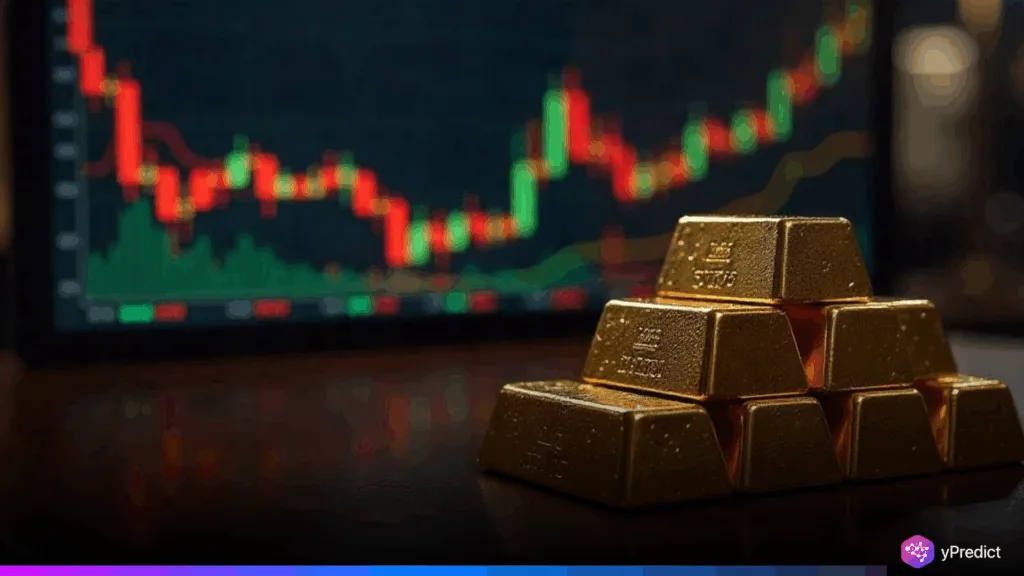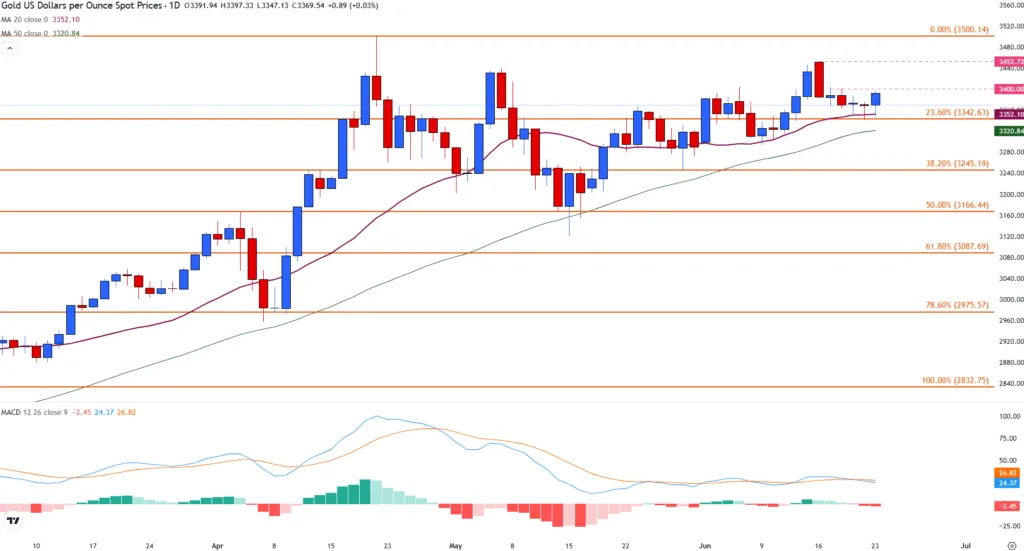
The gold price is holding below $3,400 as markets digest the fallout from US airstrikes on Iran’s nuclear facilities. Operation Midnight Hammer, which targeted key enrichment sites in Fordow, Natanz, and Isfahan, raised tensions throughout the world. Iran’s threat to close the Strait of Hormuz, a vital oil route, has increased worries about energy supply and inflation.
In addition, the crisis has caused investors to seek safe-haven assets. Meanwhile, global stock prices fluctuate as traders await policy signals from the US Federal Reserve. The gold price is now at the center of a geopolitical and economic crisis.
Can US-Iran Clashes Destabilize the Middle East?
The US attack on Iran over the weekend marked a sharp rise in Middle East instability. President Trump confirmed the action of B-2 bombers and submarine-launched Tomahawks striking nuclear facilities. He called it a “very successful attack” and warned of further action if Iran refuses to de-escalate. Additionally, Iranian officials condemned the strikes as a “heinous crime” and pledged repercussions, including Foreign Minister Abbas Araghchi.
The strikes sparked widespread reactions. The UN advised moderation, while China called them a violation of sovereignty. Additionally, Israel praised the action, but as anxiety grew, oil prices surged. If it materializes, the Strait threat could suffocate almost 20% of global oil production. Additionally, as inflation worries grow, the price of gold is rising due to a renewed demand for safe-haven assets.
Will the Strait Threat Disrupt Global Trade?
The Supreme National Security Council has the last word, but the Iranian parliament has supported closing the Strait of Hormuz. Lawmaker Esmail Kosari underlined that closure will take place “whenever necessary,” giving market concerns more urgency. Additionally, this direct threat has pushed up oil prices, putting pressure on the overall economy.

Right now, the price of gold (XAU/USD) is close to $3,370. According to technical analysis, there is resistance at $3,400 and support at $3,342. Although there is clear bearish momentum, safe-haven flows prevent gold from declining. Additionally, Fed Chair Jerome Powell’s impending policy testimony is being watched closely by investors. They are looking for any hints about the direction of interest rates.
Equity markets are mixed. US stock futures show little movement, reflecting caution. Traders are torn between geopolitical risk and upcoming central bank updates. For now, Iran strikes and the Strait threat dominate sentiment, anchoring attention to energy and inflation fears.
Gold Price Faces Crucial Test as Conflict Escalates
The Fed’s position could influence how long the price of gold stays high. A prolonged Middle East conflict or closure of the Strait of Hormuz could raise inflation risks and delay rate cuts, supporting gold demand. However, a dovish shift by the Fed or signs of de-escalation may trigger a price pullback. Gold continues to act as a hedge against uncertainty. With no resolution in sight, traders are positioned cautiously, awaiting Iran’s next steps and any disruption to energy routes.
Bottom Line
Despite geopolitical instability and inflation pressures, the gold price has remained resilient. Because of the unresolved Iran strikes and the Strait threat, demand for safe havens is high. Therefore, changes in the energy supply, Powell’s testimony, and Iran’s reaction may determine gold’s next course. Beyond important resistance levels, a sharp breakout could be triggered by an abrupt escalation.







